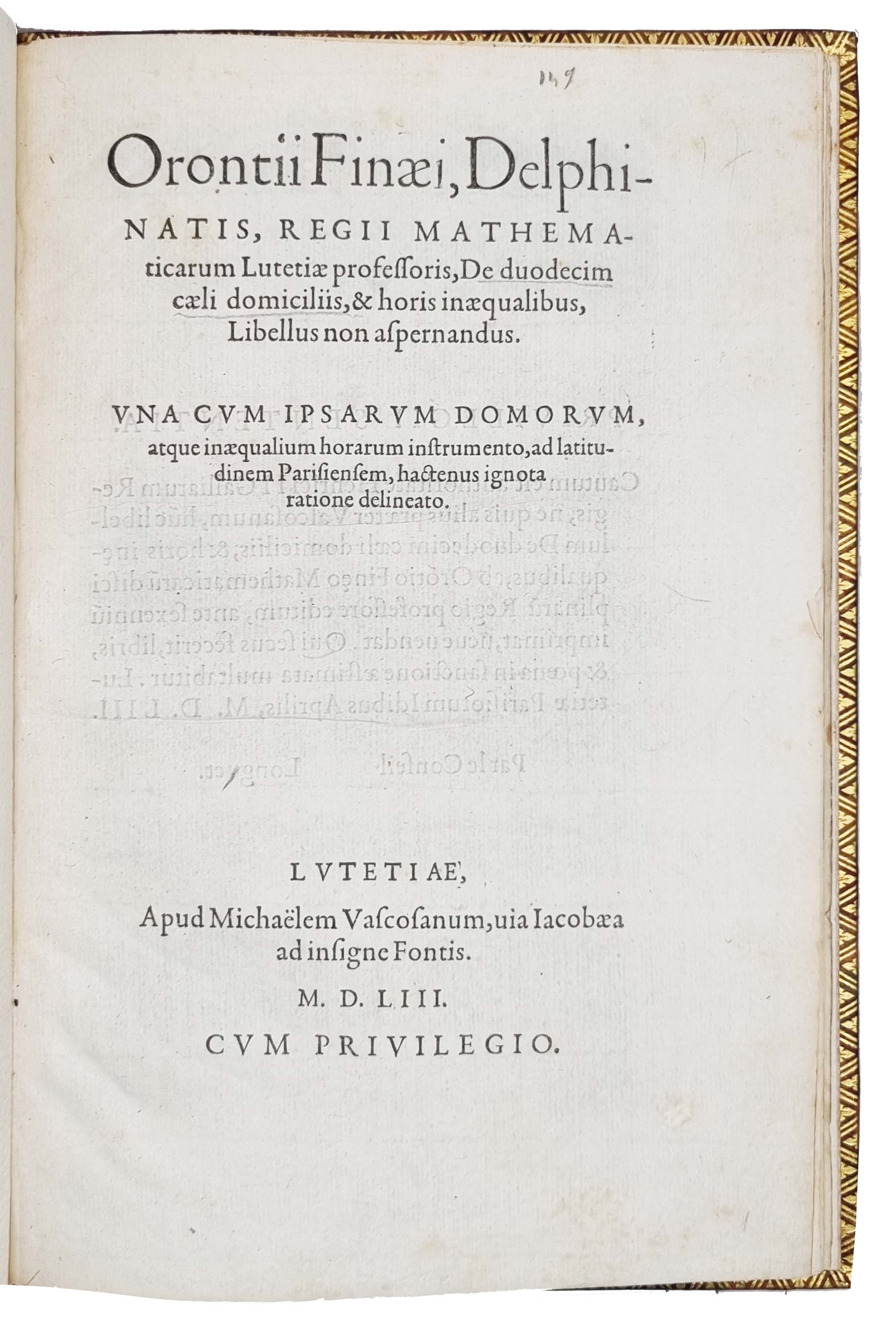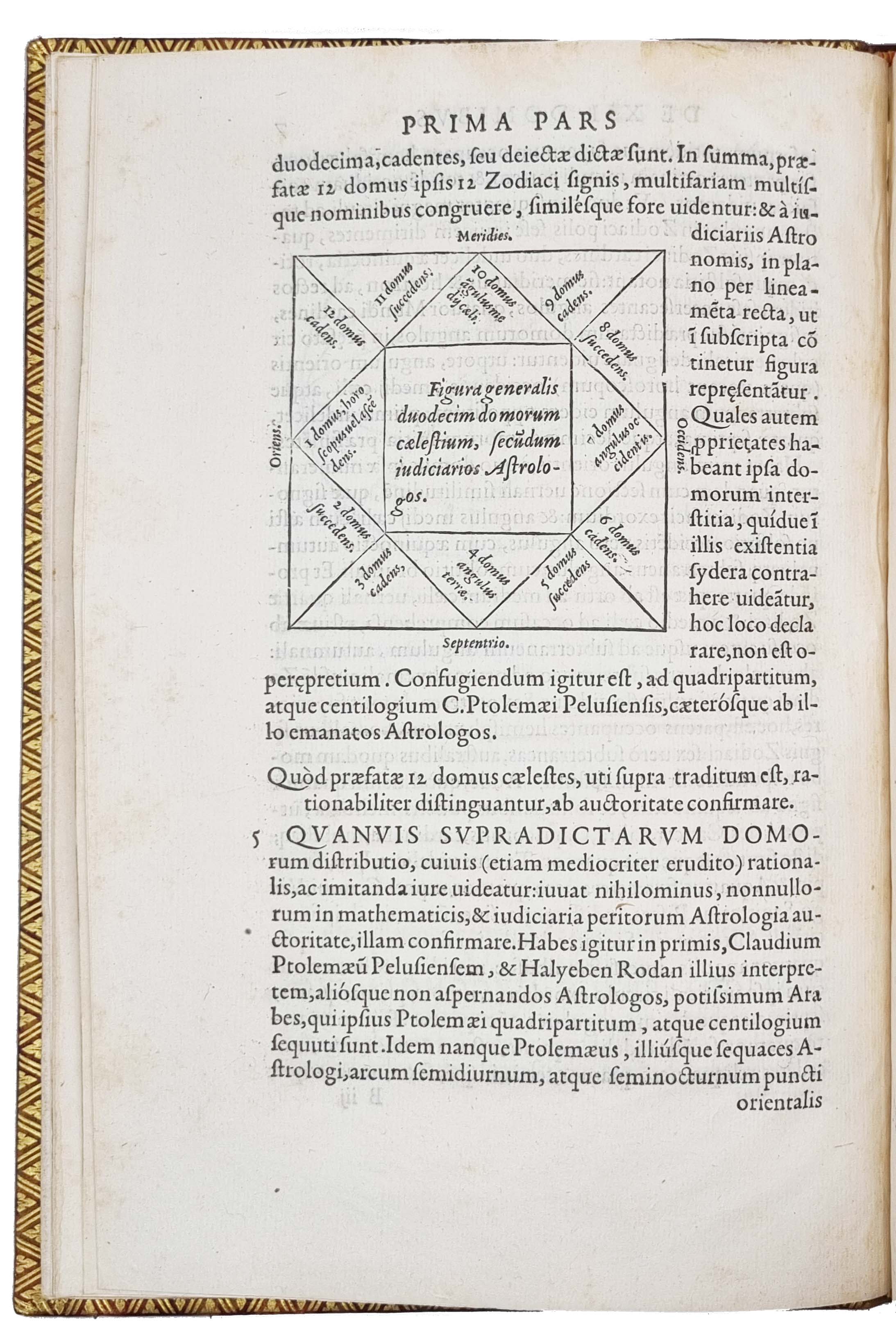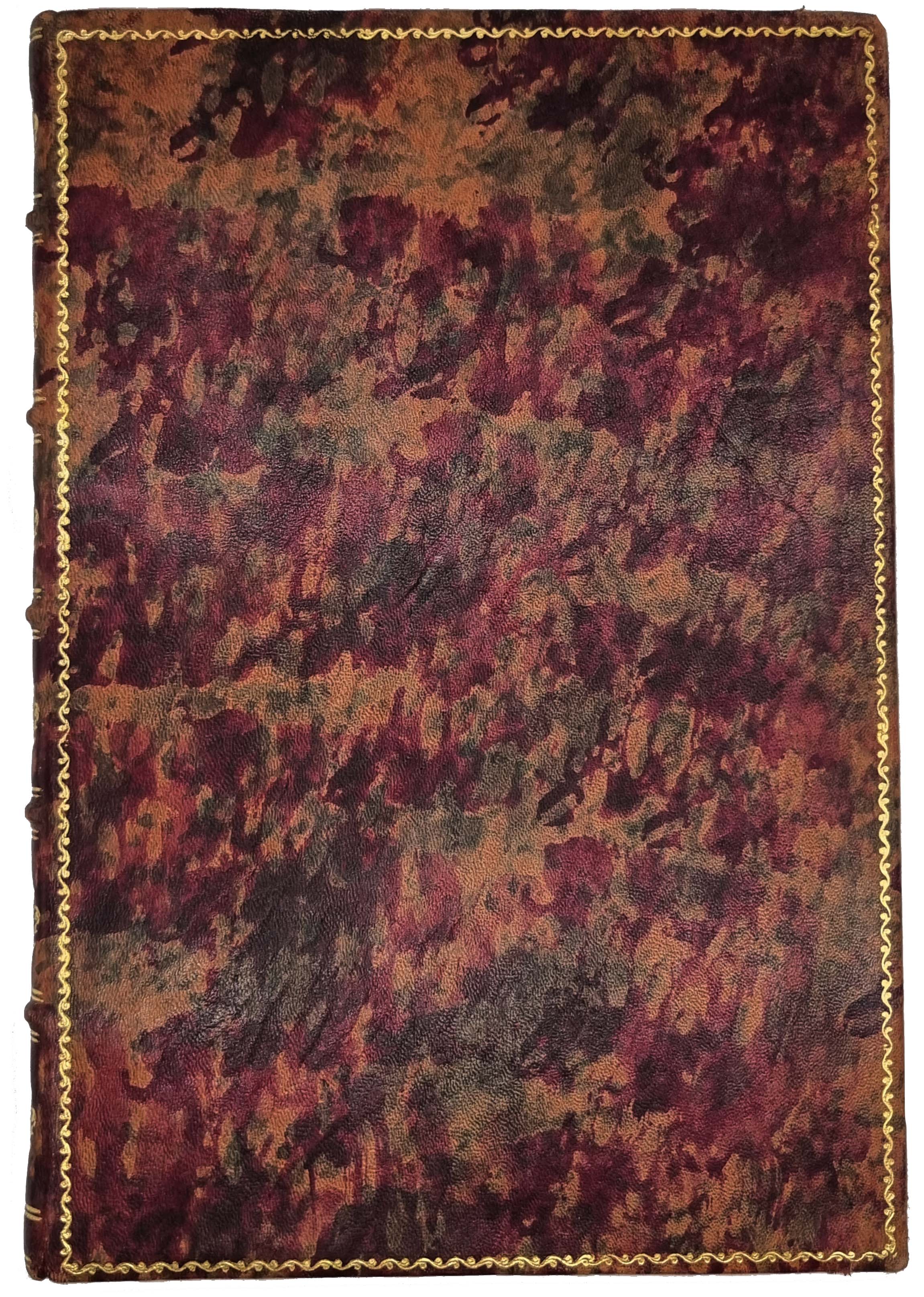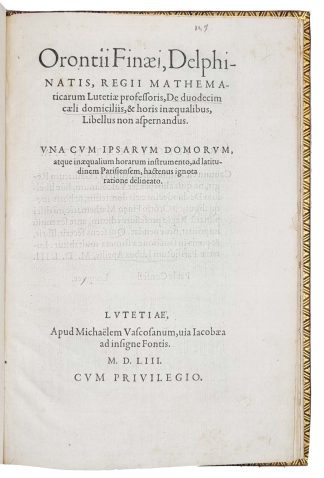FINE, Oronce
De duodecim cæli domiciliis, et horis inæqualibus, libellus non aspernandus..
Paris, Apud Michaëlem Vascosanum, uia Iacobæa ad insigne Fontis, 1553£2,950.00
FIRST EDITION. 4to. ff. 30. A-F4, G6. Roman letter, some Italic. Floriated woodcut initials, fine woodcut chart of the zodiac in circular form, woodcut diagrams in text, full page typeset tables. Very minor marginal spotting, tiny hole to outer blank margin of C4. A fine copy, crisp and clean, with good margins, in modern mottled sheep, covers bordered with a gilt scroll, spine with raised band, gilt ruled in compartments, fleurons gilt, inner dentelles gilt.
Beautifully printed first edition, of this rare treatise on astrology by one of the most influential mathematical teachers of his time. The work is essentially concerned with the twelve houses of the zodiac and their interpretation for judicial astrology. “Oronce Fine (1494–1555), a French mathematician from the Dauphiné, is chiefly known to historians of science for having been the first to teach mathematics as a royal lecturer within the institution founded by François I in March 1530, but also for his work as a cartographer, as a designer and maker of mathematical instruments, as well as an engraver and an editor of scientific books. .. A central role was attributed to astronomy within Fine’s mathematical teaching program, since the Cosmographia, sive mundi sphaera. (However) .. it would be reasonable to think that Fine also viewed his editorial work on Sacrobosco’s Sphaera as a contribution to the training of astrologers, to help them learn how to calculate the positions of planets in relation to the zodiacal signs and the celestial houses, an activity in which he himself engaged as a court astrologer and which he later promoted through the publication of the ‘Canons des ephemerides’ 1543 and the De duodecim caeli domiciliis 1553. These works respectively deal with the art of producing almanacs (including their astrological features) and with the division of the celestial houses and of the planetary hours necessary to the casting of horoscopes. Fine also published in 1529 an Almanach novum aimed to help produce elections in the context of medicine, church duties, banking, and many other important functions. ..(the second part of the present work) considers the distinction between the equal and the unequal hours that divide artificial days and nights according to the latitude of the viewer and shows how to calculate the length of unequal hours for the latitude of Paris, as well as how to reduce unequal hours to equal hours and vice versa. Fine also explained at this occasion the correspondence between the planets (and their rising in the first hour of the artificial day) and the names of the days of the week (Saturn on Saturday, the sun on Sunday, etc.), which he represented through a little table also indicating the planets ruling the first hour of the night, as well as the means to determine the planets ruling the other planetary hours for any day of the week.” Angela Axworthy. “Oronce Fine and Sacrobosco: From the Edition of the Tractatus de sphaera (1516) to theCosmographia (1532).”
A handsome copy of this rare astrological work.
Cantamessa 2611. Bibliography of Gnomonica p. 105. Lalande, Bibliographie Astronomique p.76. Bibliografia, Bibl. Magica 453. Houzeau-Lancaster 4858. Adams F 464. Grassi p. 255. Olschki 13290 “très rare”. Not in Brunet.
In stock





